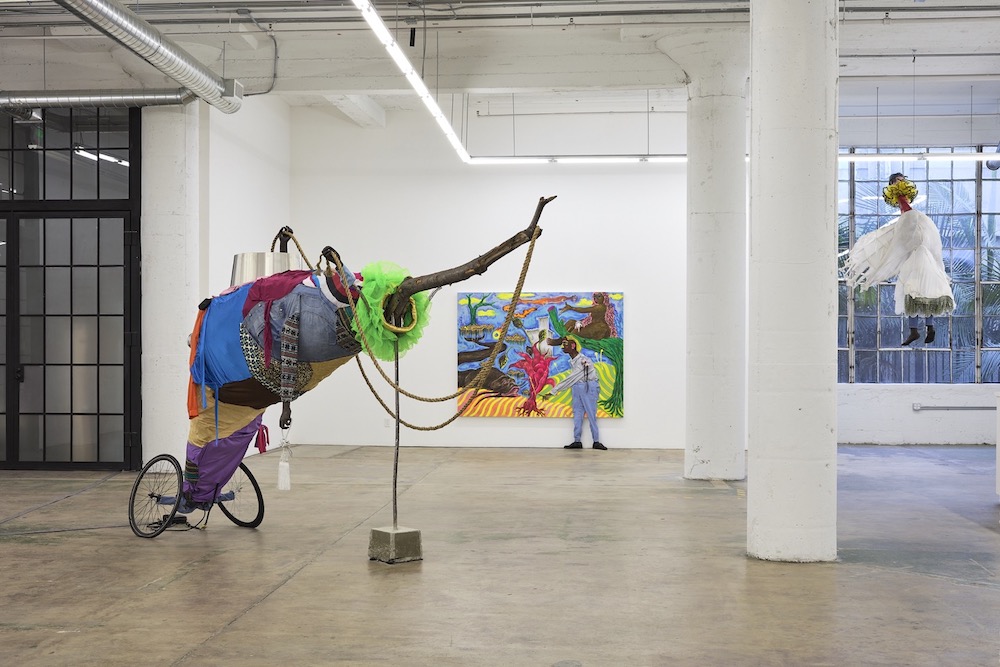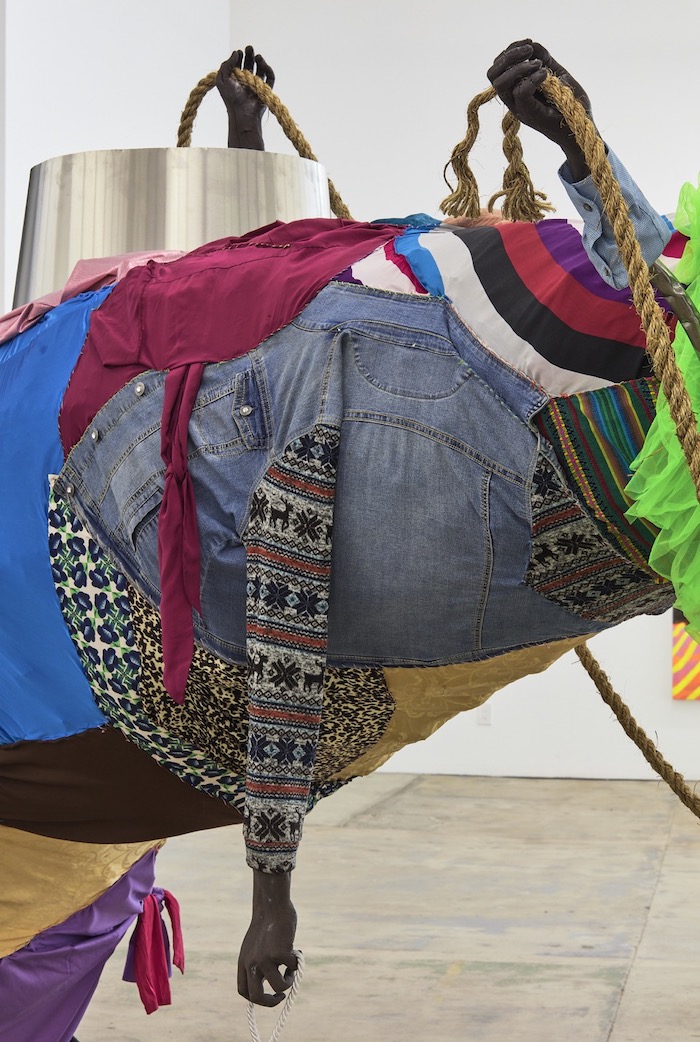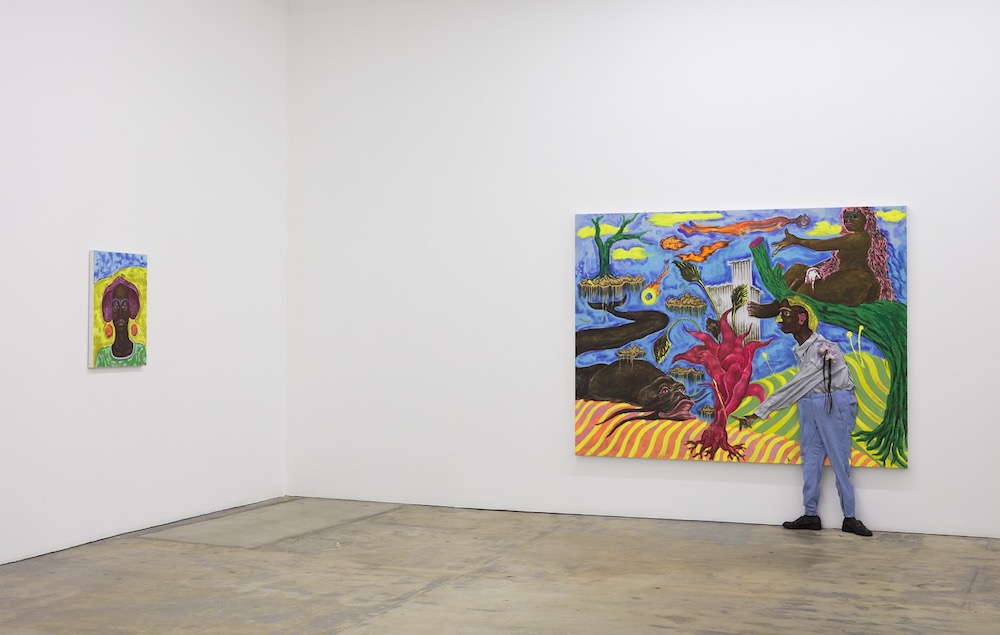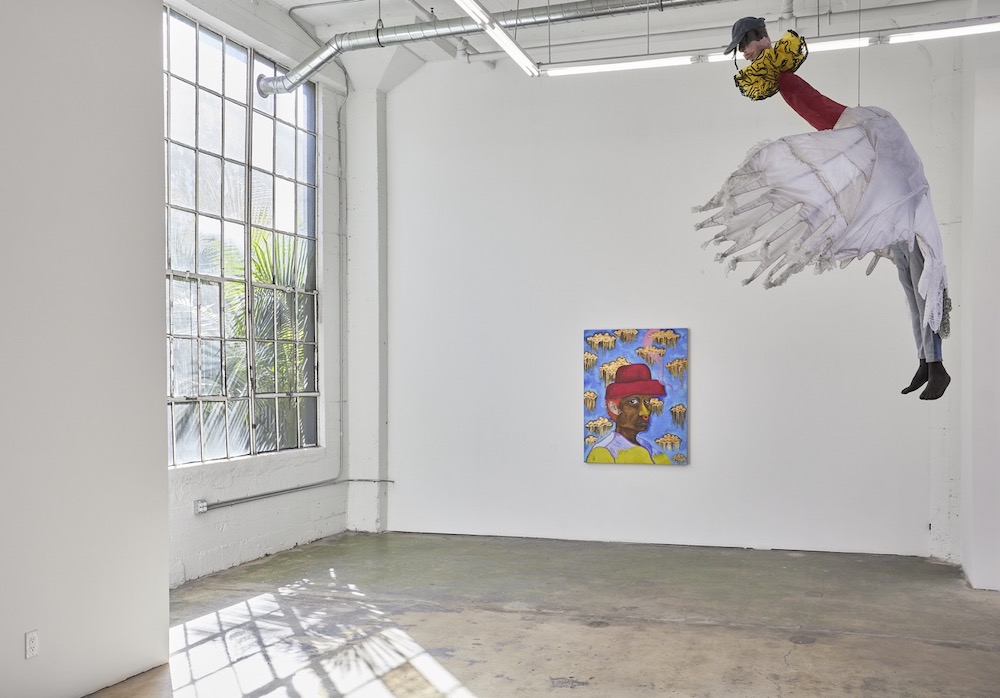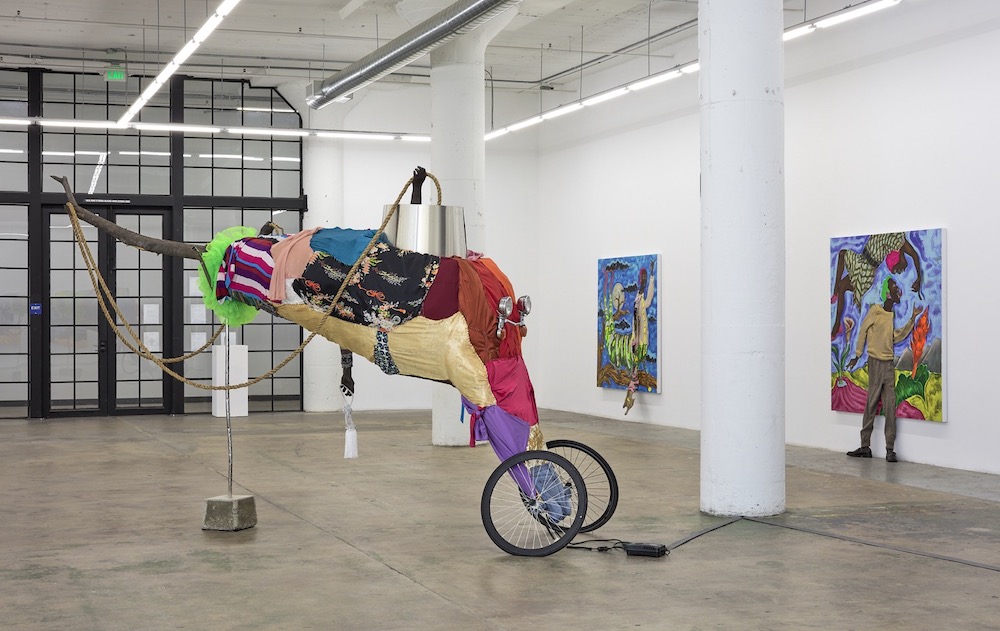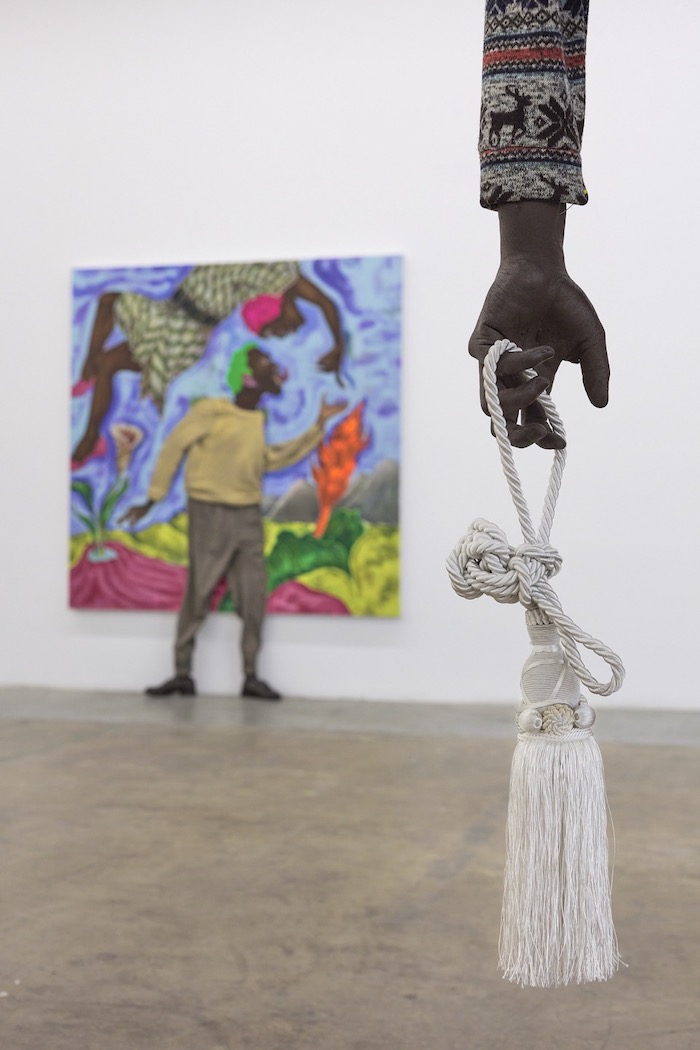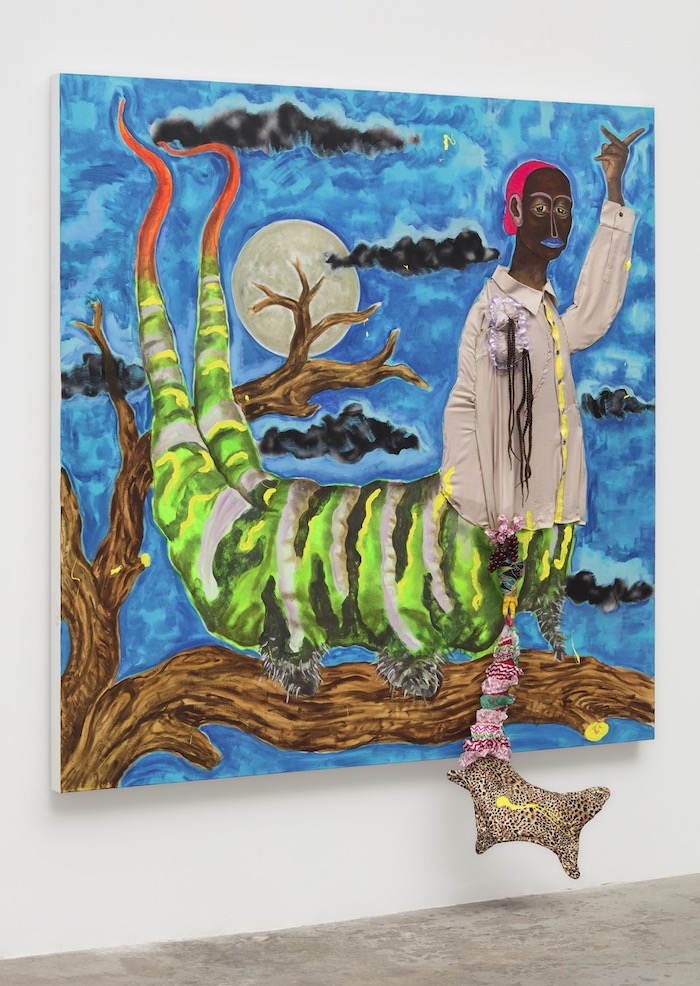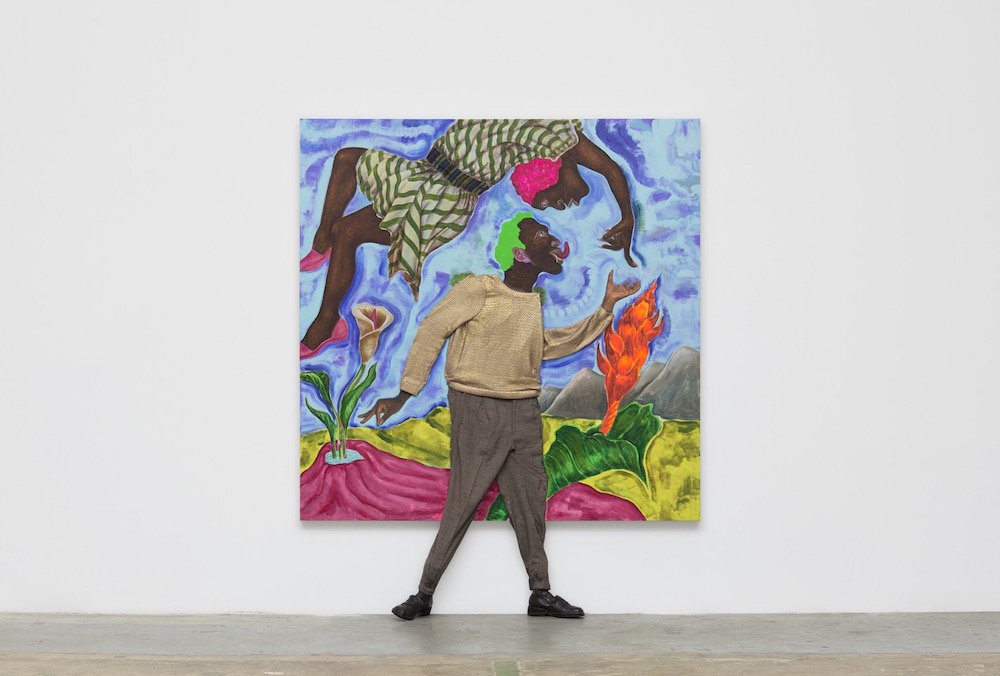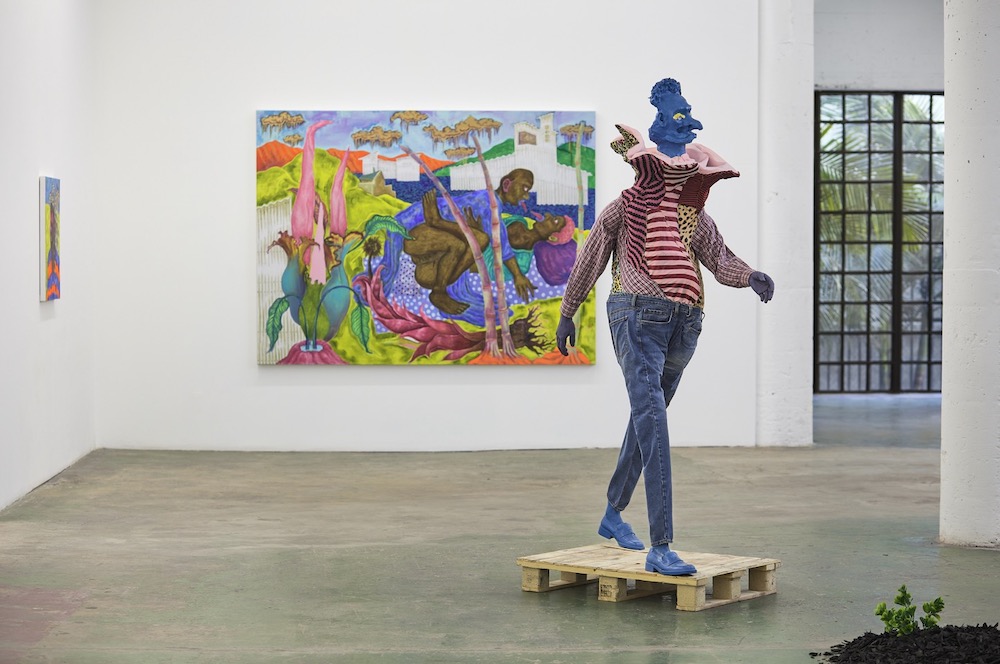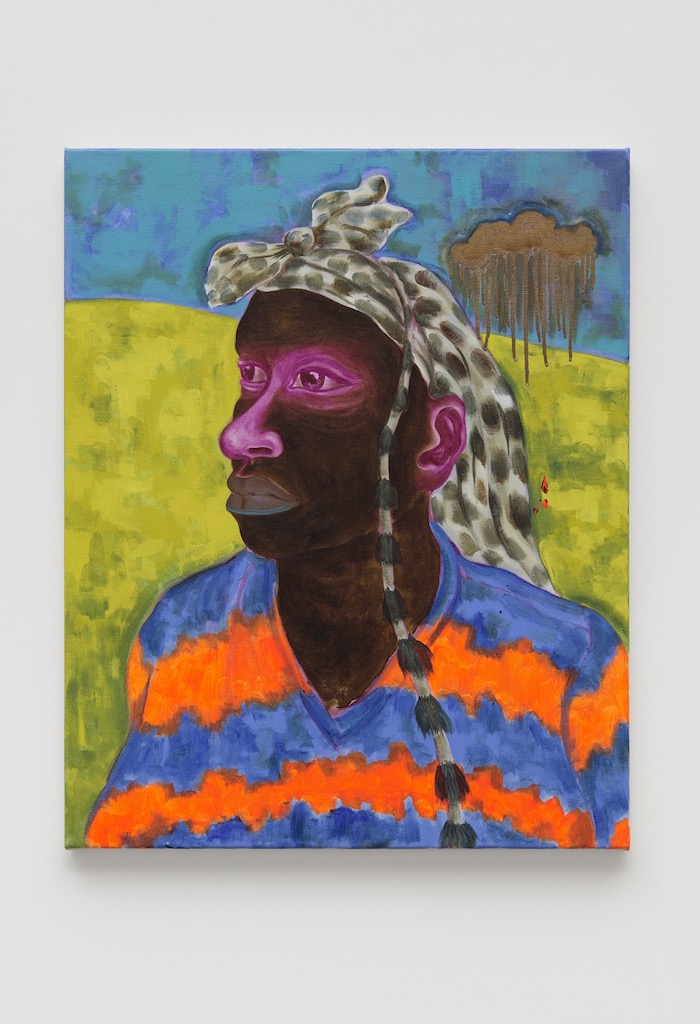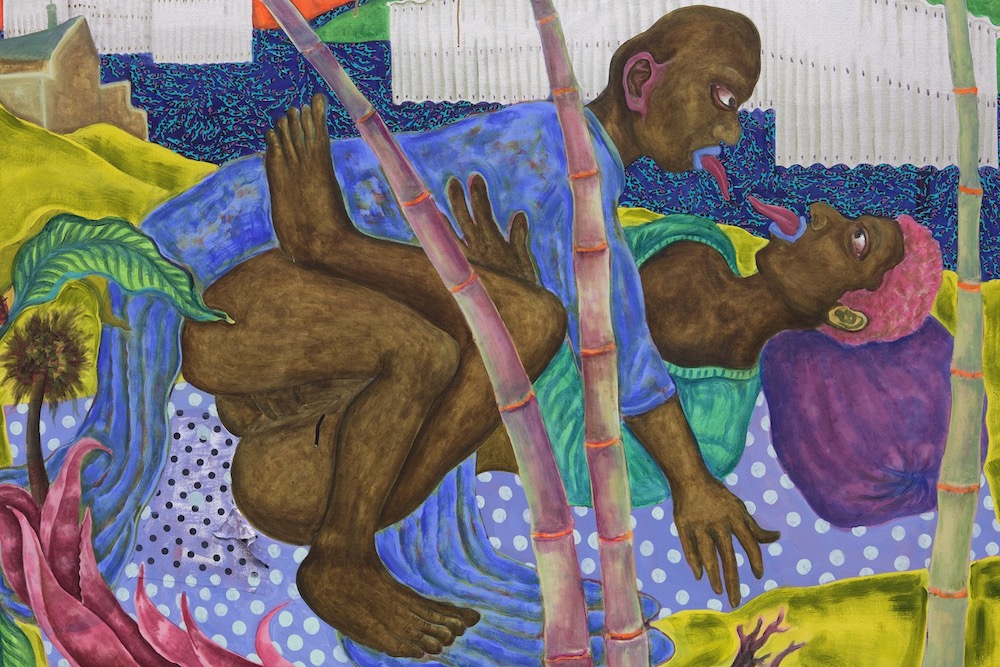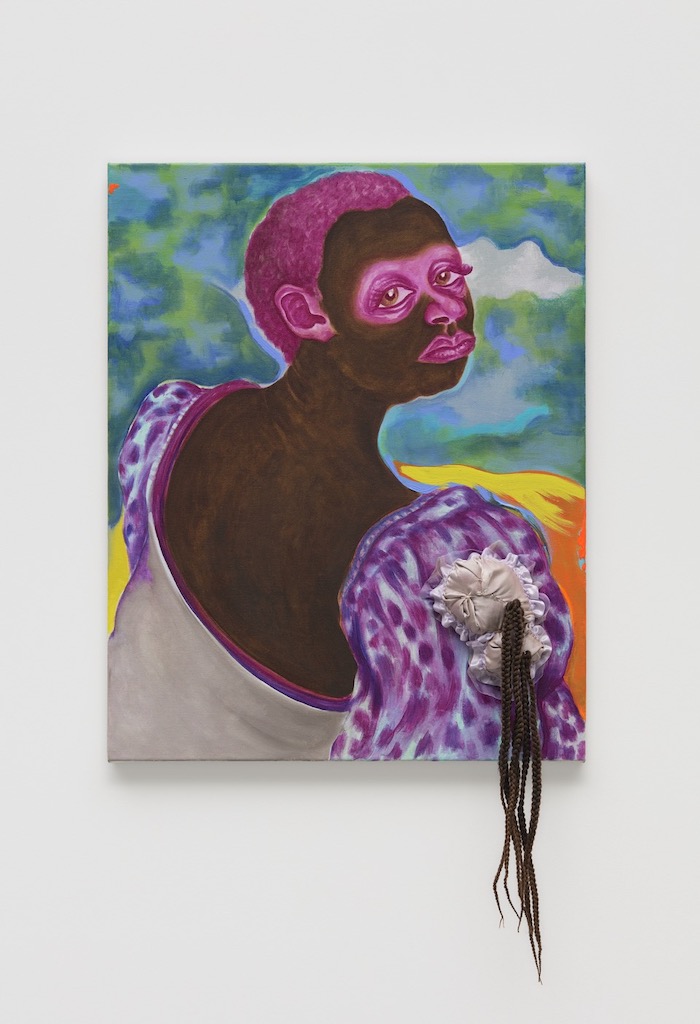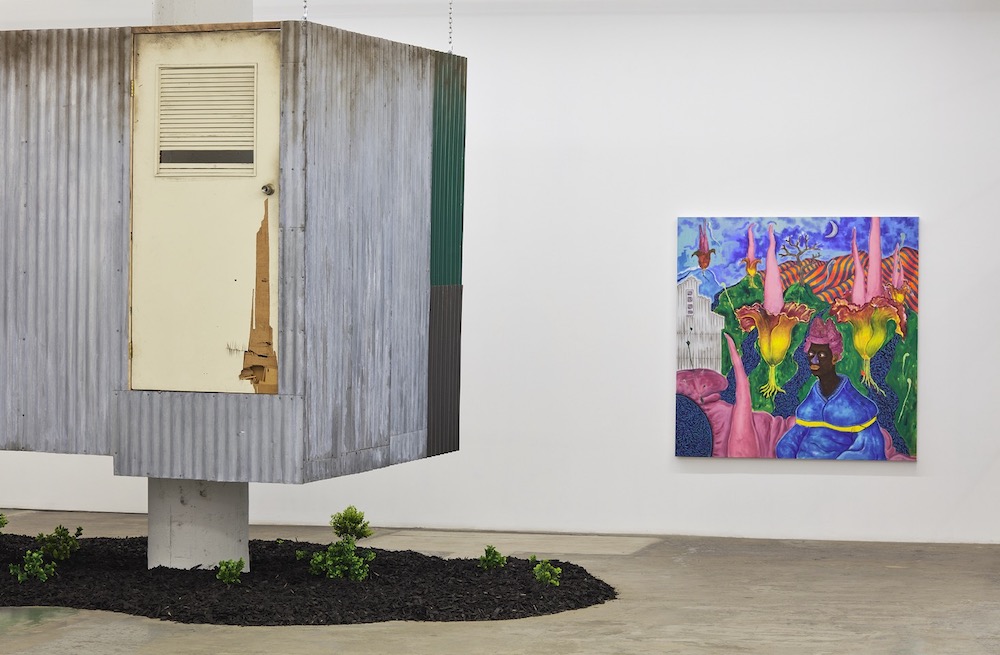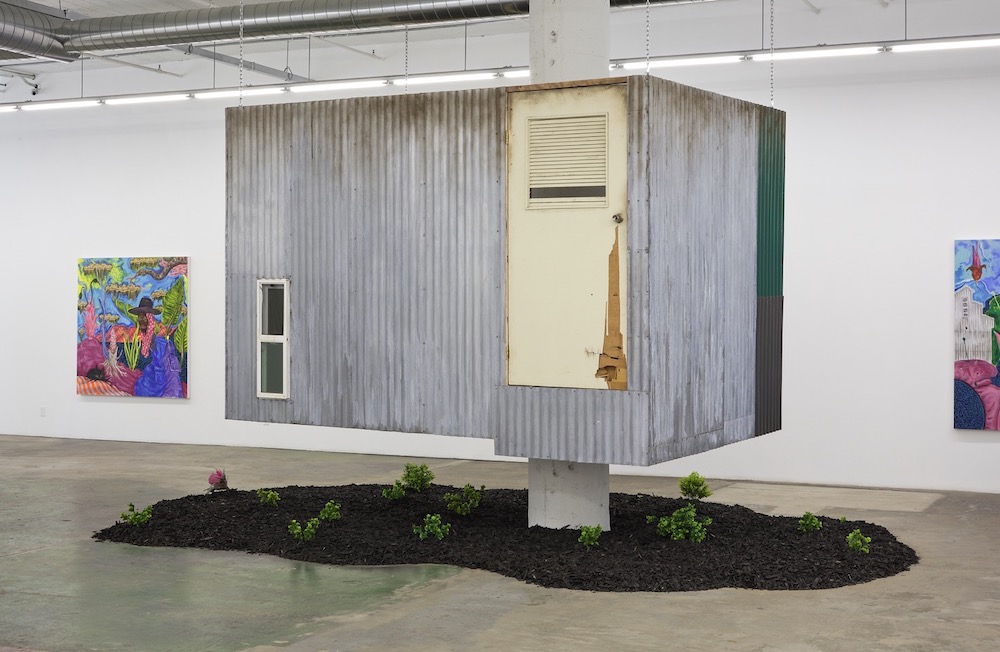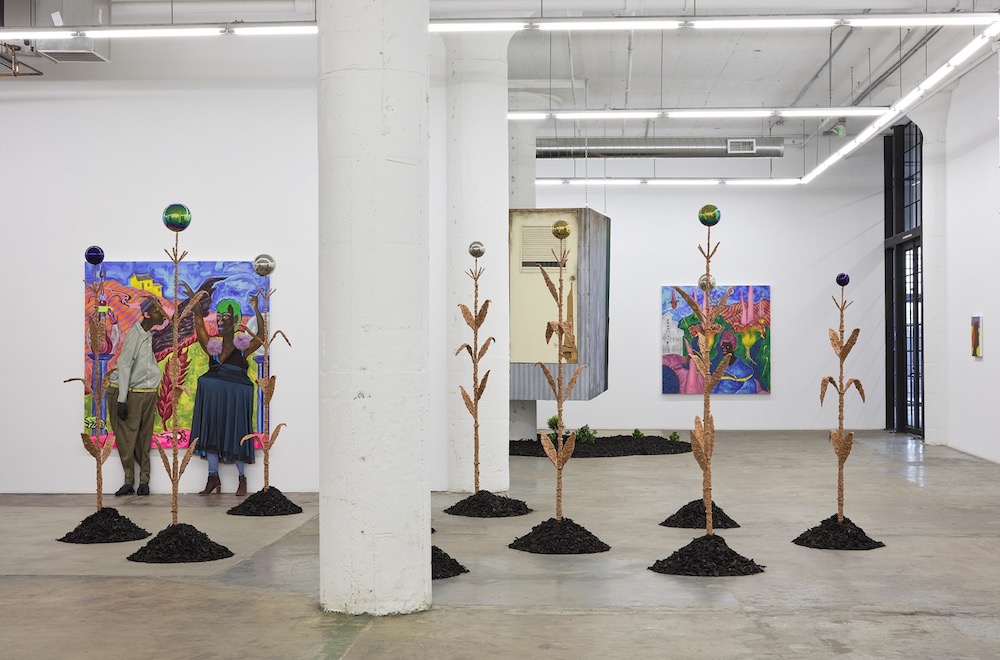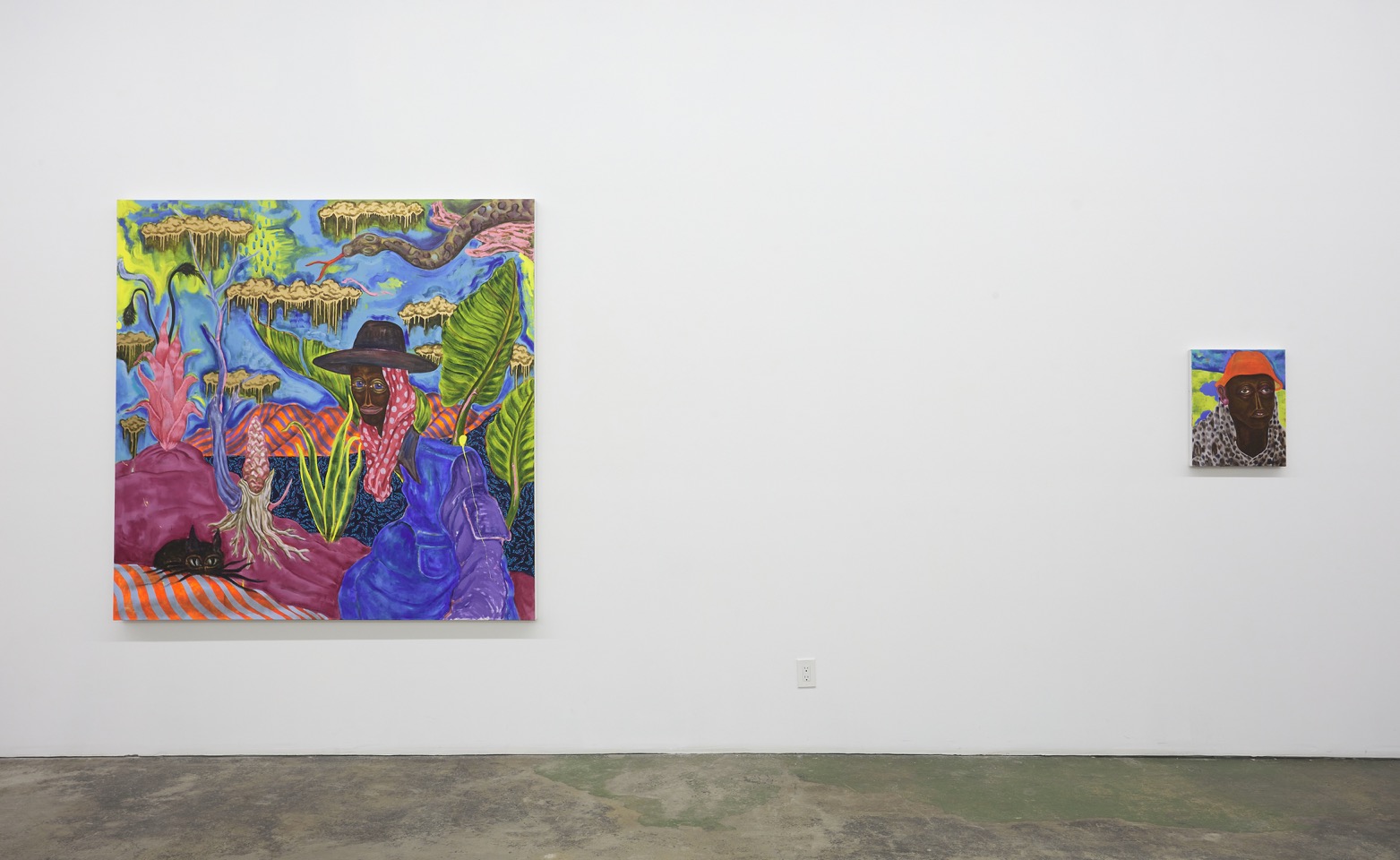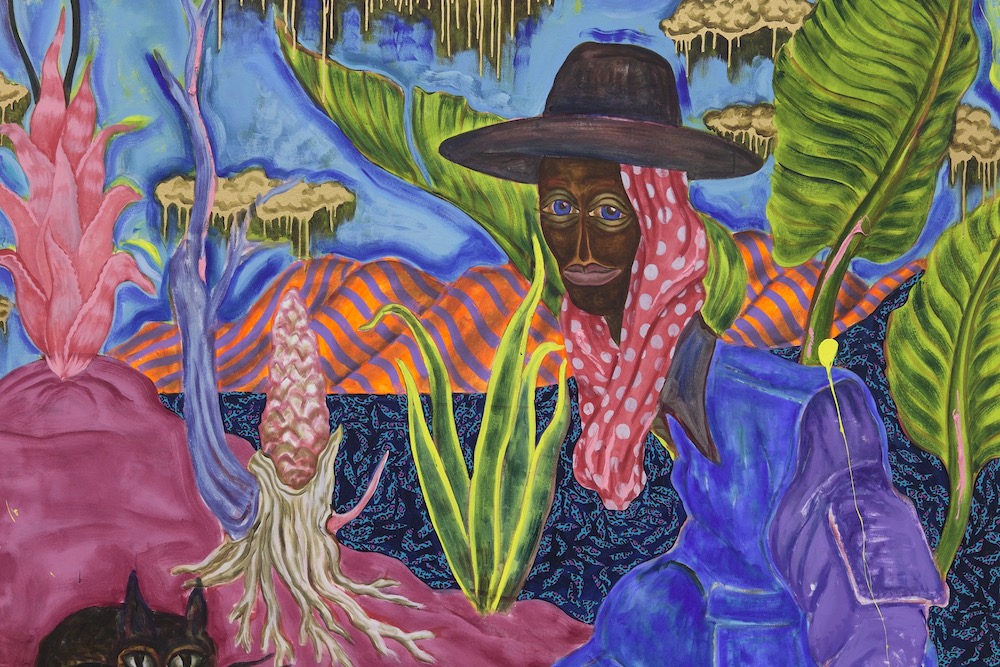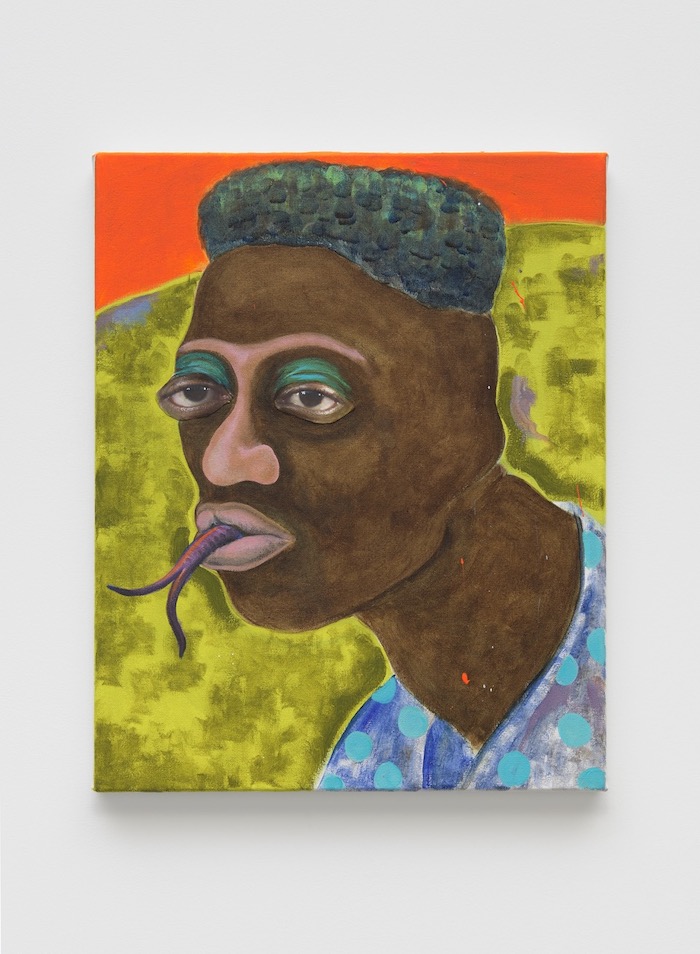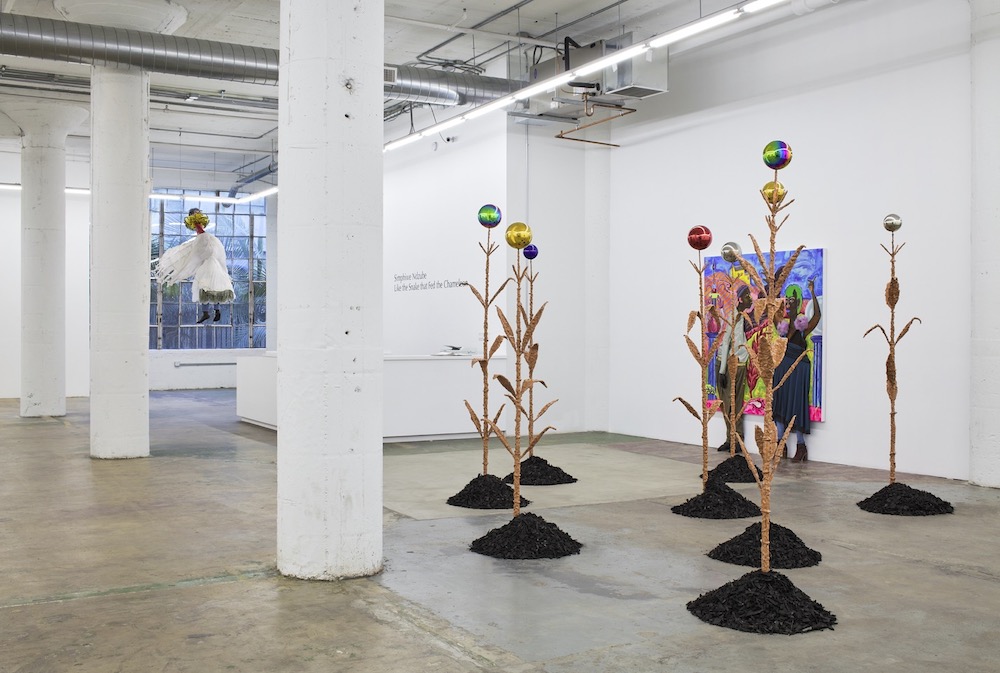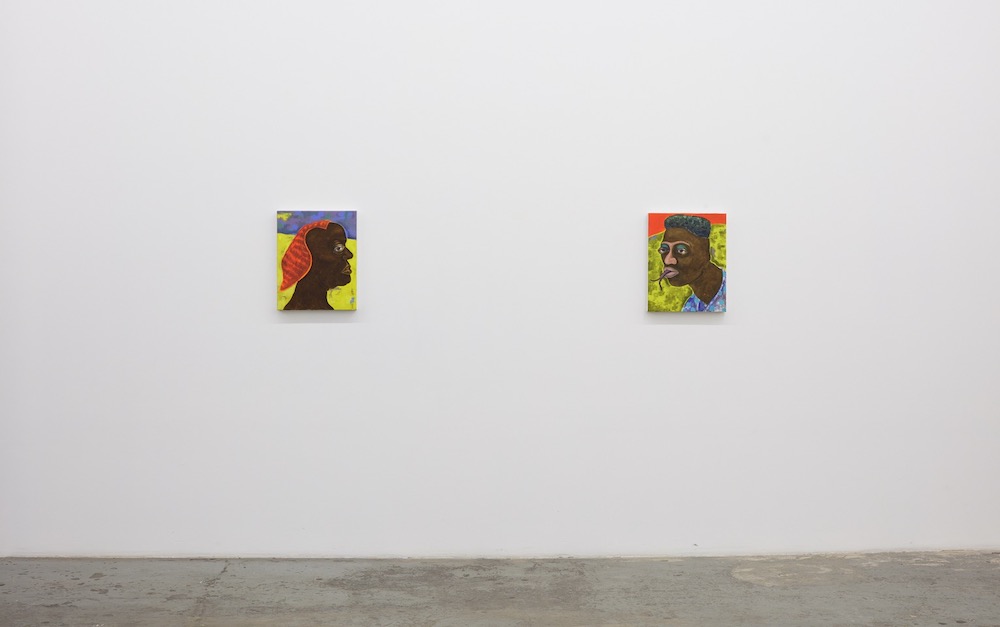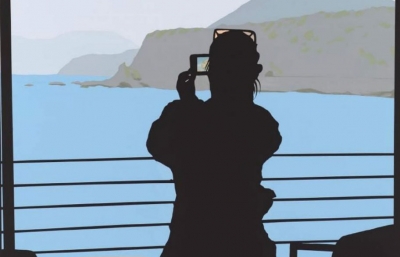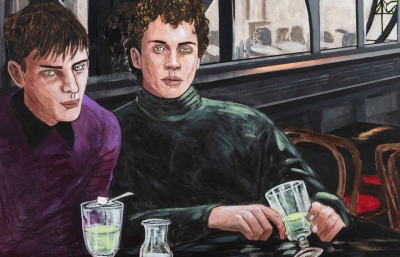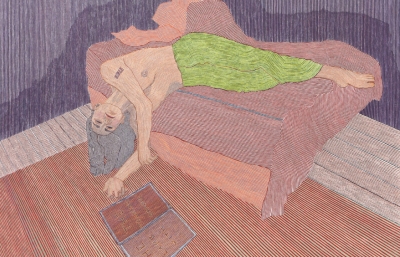In the past year or so we've been keeping a close eye on Simphiwe Ndzube's practice and his presentations, and we're thrilled to see some of the elements he shared with us in the Art in Uncertain Times feature or revealed in Amsterdam paper works show, culminating in his major solo presentation which closed this past weekend at Nicodim Gallery in LA. The Snake that Fed the Chameleon continues to develop and expand his cosmology, reimagining Black bodies as mythical and fantastic beings capable of inhabiting parallel dimensions, namely the artist's own universe named The Mine Moon.
Part fantasy, part local African legends, and part national history, "The Mine Moon" is the imaginary place around which Ndzube keeps developing his works. And after focusing on The Fantastic Ride to Gwadana with his last major show in Johannesburg earlier this year, his third show with Nicodim is once again presenting his exceptional imagination and technical versatility. From small portraiture paintings introducing his cast of characters, over large mixed media paintings telling their story, to additional sculptures and big scale installation, the immersive exhibition is accompanied by a twenty-minute sound piece the artist composed and recorded with Thabo K. Makgolo and Zimbini Makwethuemanates. Coming from within the large, suspended structure appearing as a home shack levitating above the fertile ground, the haunting music is meant to accent the fantastical ambiance of this show.
Aside from mentioned creativity and technical versatility the captivating beauty of this exhibition comes from the fact that it uses fantasy as a language to communicate with the viewers. Skipping over cultural differences and avoiding misinterpretation, Ndzube is working with the impossible to speak about the universal subjects of fluidity and permeability of identity itself, with an accent on his native country and its inhabitants. By drawing, painting, and constructing human subjects with supernatural abilities alongside mythical creatures, he is creating a metaphor for their ability to endure and prosper regardless of the unfavorable settings or circumstances. This thriving is especially noticeable in the part of the installation that shows fertile grounds and the surreal, otherworldy cornfield which is ready to be harvested. In total, the presentation filled with oddities, weirdness, and borderline creepiness, is imbued with genuine and impulsive positivism fed by the raw urge to live, express oneself, and prosper. —Sasha Bogojev

